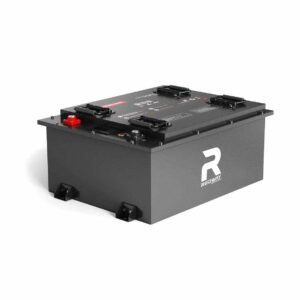What Are Cells and Cell Sites in Mobile Networks?
A cell is a geographic area covered by a mobile network, while a cell site refers to the physical infrastructure (towers, antennas, equipment) enabling wireless communication. Cells divide networks into smaller zones to optimize signal strength and capacity, while cell sites house transmitters/receivers to connect users to the network.
What Batteries Do Cell Phone Towers Use? A Comprehensive Guide
How Do Cells Function in Wireless Communication?
Cells operate by dividing service areas into hexagonal zones, each managed by a cell site. This division prevents signal overlap, reduces interference, and allows frequency reuse. When users move between cells, networks perform “handoffs” to maintain connectivity via protocols like LTE Handover or 5G Xn-based mobility.

Modern cellular networks employ advanced techniques like interference coordination and dynamic spectrum sharing. The hexagonal cell model minimizes gaps in coverage while allowing efficient reuse of limited radio frequencies. For example, a frequency used in Cell A can be reused in Cell D located far enough to avoid interference. 5G networks enhance this through beamforming, where phased array antennas focus signals directionally rather than broadcasting omnidirectionally. This spatial precision enables higher frequency reuse ratios – critical for supporting dense urban deployments with over 1 million devices per square kilometer.
| Handoff Type | Technology | Latency |
|---|---|---|
| Hard Handoff | 3G CDMA | 100-200ms |
| Soft Handoff | 4G LTE | 50-80ms |
| Make-Before-Break | 5G NR | <10ms |
What Security Measures Protect Cell Sites?
Multi-layered security includes: 1) Tamper-proof enclosures with intrusion detection, 2) AES-256 encryption for fronthaul/backhaul, 3) Zero Trust Architecture (ZTA) for device authentication, and 4) AI-driven anomaly detection systems. The 3GPP’s SEAF (Security Anchor Function) authenticates all 5G user equipment at the cell site level.
Physical security measures have evolved beyond simple locks to include biometric access controls and seismic sensors that detect climbing attempts. Cybersecurity implementations now feature quantum-resistant algorithms in preparation for post-quantum computing threats. The Zero Trust framework requires continuous verification of all devices, even those inside the network perimeter. For example, a 5G gNodeB might validate every data packet’s origin using cryptographic signatures. AI monitoring systems analyze traffic patterns in real-time, detecting anomalies like unusual signaling volumes or unexpected international roaming attempts. These systems can automatically isolate compromised sectors while maintaining service continuity through redundant pathways.
What Components Make Up a Cell Site?
Key components include: 1) Base Transceiver Station (BTS) for signal transmission, 2) Antennas (sectorized for directional coverage), 3) Backhaul connections (fiber/microwave links), 4) Power supply systems (batteries/generators), and 5) Remote Radio Heads (RRHs) in modern distributed architectures. Advanced sites deploy Massive MIMO arrays for 5G beamforming.
Why Are Cell Sites Spaced Strategically?
Spacing depends on frequency band characteristics: low-band (sub-1GHz) sites cover 5-15 miles, mid-band (1-6GHz) 0.5-2 miles, and mmWave (24-40GHz) 500-1,500 feet. Urban areas require dense small cells (~200m spacing) for capacity, while rural regions use macro cells with 45m+ towers for maximum coverage.
What Are the Different Types of Cell Sites?
| Type | Coverage | Power Output |
|---|---|---|
| Macro Cell | 1-15 miles | 25-100W |
| Micro Cell | 0.5-1 mile | 5-10W |
| Pico Cell | Indoor | 250mW-2W |
| Femto Cell | Residential | 100-250mW |
How Does Network Slicing Affect Cell Architecture?
5G network slicing enables virtual partitioning of cell resources: Enhanced Mobile Broadband (eMBB) slices prioritize throughput via carrier aggregation, Ultra-Reliable Low Latency (URLLC) slices use edge computing nodes, and Massive IoT slices employ NB-IoT modulation. This requires software-defined RAN controllers at cell sites.
Modern cell sites are evolving into AI-powered edge data centers. With Open RAN standards, we’re seeing 47% more compute density at cell sites compared to 2020, enabling real-time network optimization through machine learning models that predict traffic patterns and energy requirements.”
– 5G Infrastructure Architect, Telecom Equipment Manufacturer
FAQs
- How many cells does a typical cell site cover?
- Modern three-sector sites typically service 3 cells (120° per sector), though advanced 5G mmWave deployments use 64-sector antennas for hyper-focused beams. Each sector operates on separate frequency channels to minimize interference.
- Can cell sites work during power outages?
- Most cell sites maintain 4-8 hours of backup via VRLA batteries, with critical sites having hydrogen fuel cells or natural gas generators for 72+ hour runtime. New NFV (Network Functions Virtualization) techniques reduce energy use by 33% during outages.
- What’s the lifespan of a cell site?
- Physical infrastructure lasts 20-25 years, but electronic components undergo 3-5 year upgrade cycles. The shift to cloud-RAN and O-RAN is accelerating hardware refresh rates, with 78% of operators now replacing site equipment every 36 months to support new standards.
Conclusion
Cell and cell site technology underpins modern mobile connectivity through sophisticated spatial division and adaptive infrastructure. As networks evolve toward 6G (targeting 1Tbps speeds), cell architectures will integrate terahertz frequencies, holographic beamforming, and quantum encryption modules, requiring complete reimagining of current site designs while maintaining backward compatibility.
